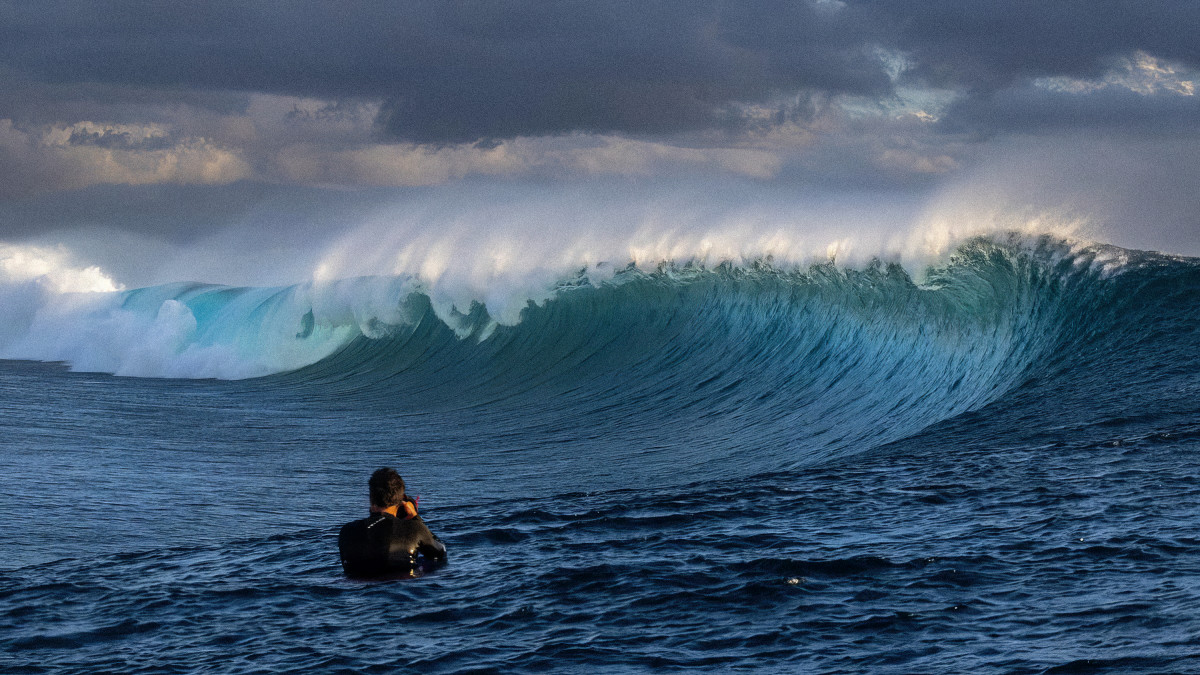
It’s before dawn here in Tahiti. The morning light has yet to creep its way through the looming, otherworldly lush mountains that bulge right up to coastline, offering a striking backdrop for one of the Seven Wonders of the Surfing World: Teahupo’o.
From across our modest living quarters, I hear Ryan “Chachi” Craig rustling. He’s muttering to himself, slowly transitioning from the world of dreams into the realm of the living, and prepping for what’s poised to be the biggest day of competitive surfing in the Paris 2024 Olympics – and, perhaps, in the history of the sport. But first, something to get the cognitive functions flowing.
“Coffffffeeeeee,” he groans, grinding the beans in our makeshift, in-room caffeination station. “It’s time to wake the f*ck up. Today’s gonna be gnarly out there. I hope nobody dies.”
Before Chachi became a staple in the surf photography scene, primarily for shooting from the water at heavy spots like Pipeline and Teahupo’o, he was born and raised in Santa Cruz, California. In 2014, he won the esteemed Follow the Light Surf Photography Grant, a program designed to assist aspiring lesnmen and women, and honoring the late, great Larry “Flame” Moore. From then on, he was a staff photographer for SURFER Magazine from 2015 to 2020.
And now, he’s back. He’s pulling 10-hour days on the boat during the Olympic surfing event, editing late into the evening, and providing all the stunning imagery that you’ve seen during our extensive coverage from here in Tahiti. So, we decided to hear his take on this whole Olympic surfing saga. What’s it like to photograph the biggest surf event in history? Chachi told us.
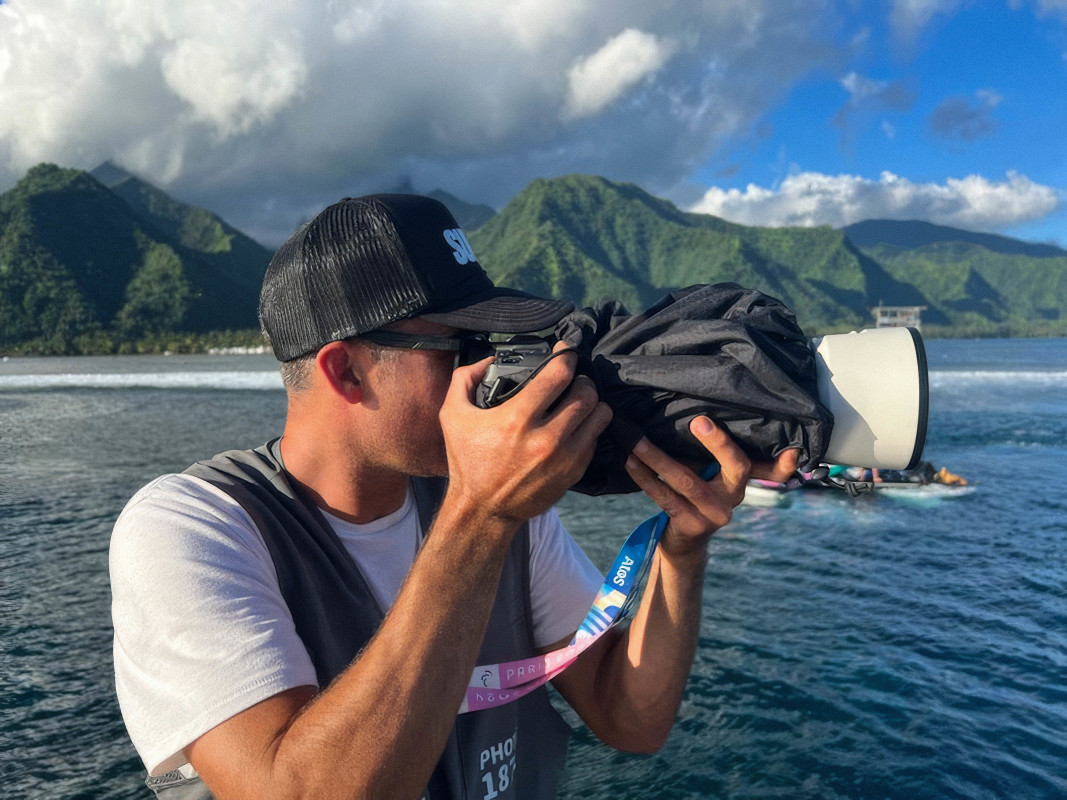
Photo: Dom Mosqueira
What’s the experience been like shooting the Olympics?
It’s been really fun. I don’t know if I ever thought that photography would bring me to the Olympics. Obviously with surfing, that possibility changed with Tokyo 2020. Even with this, it all came together somewhat last minute. But overall, it’s a very cool experience – both with what’s happened during the event, and then to be able to say that I went to the Olympics. That’s something really cool to reflect on, probably more so after the fact than in the moment.
You’re normally in the water shooting Teahupo’o. Is it frustrating being on a boat?
In general, I pride myself on shooting a lot of different styles, different angles, different approaches to waves. So, swimming in the water amongst the surfers is something that I like to do. I’d even love to shoot from the reef or with my drone. But there’s a lot of limitations on shooting the Olympics that are less than ideal from a photography standpoint.
The thing with the boat is, we have the same angle every day. I don’t necessarily dislike shooting from a boat. In fact, on the big day [Monday, July 29th] it allowed me to shoot a lot of empty waves from an angle that I probably wouldn’t normally see them from. So, there’s pros and cons. But it is a little frustrating that we are in one position during the whole event on the boat.
How do you think some of these photographers would go, if they were swimming in the water, like you normally do?
It’s probably a 50/50 split of people that would have the ability and then people that would have no ability. I share a boat with my good buddy, Dom [Mosqueira], and he and I love to swim. We put a lot of time in, shooting from the water. We both enjoy that aspect of surf photography. There’s a lot of people out there, who I’m not familiar with their work, and I’m sure they’re very competent when it comes to certain things…but I doubt one of them is swimming in the impact zone at Teahupo’o. But they could prove me wrong!
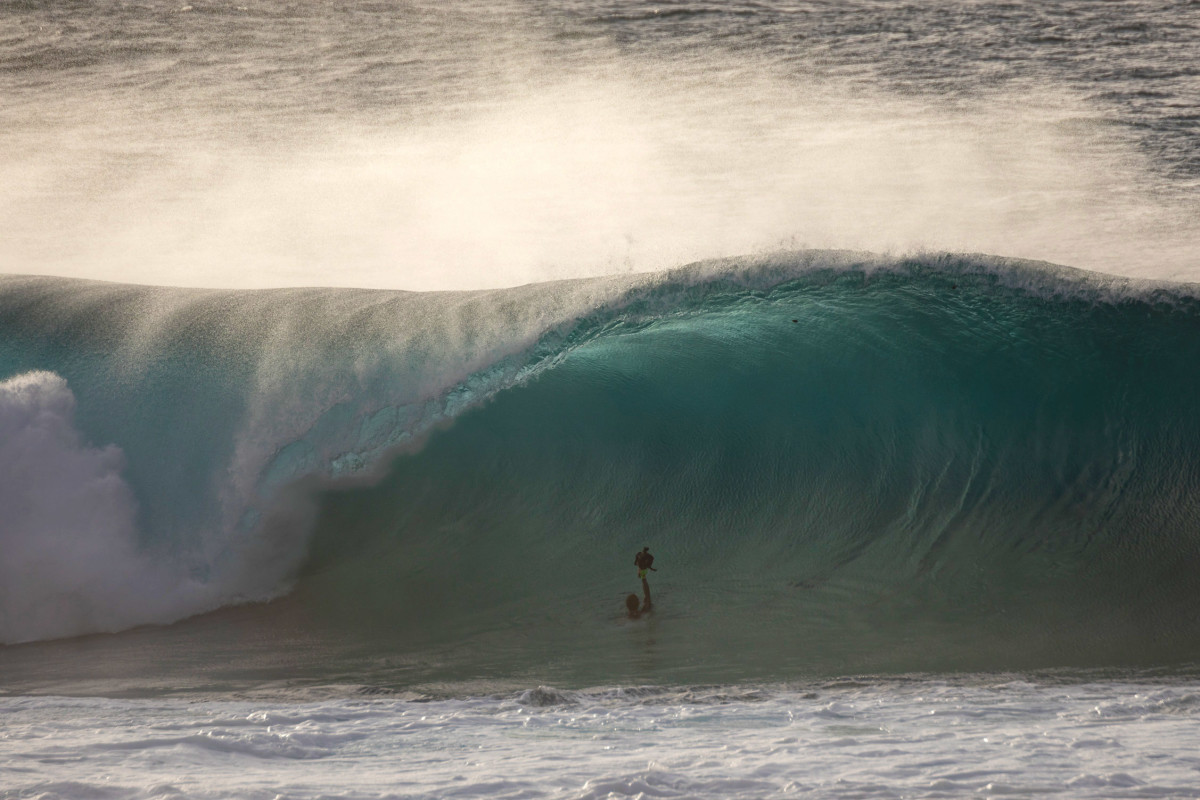
What’s your Dramamine intake looked like during the Olympics?
I’m a two-a-day Dramamine type of guy. It’s one in the evening, and one in the morning before going out on a boat. I don’t spend much time on boats. I’ve had motion sickness on any type of craft in my life – plane, boat, car – especially when I was a kid. There’s something about swaying back and forth for 10 hours straight…it’s hard for me to enjoy that experience unless I have Dramamine. It’s been tolerable. But even if I took 50 Dramamine, I’d come off the boat, and I have sea legs for hours. Straight swerving.
Related: Why Are So Many Perfect Waves Going Un-Surfed in the Olympics? (Gallery)
Is there a hierarchy of photographers in the water, like there is with surfers?
One of the most confusing aspects of how this all was going to play out was what type of access SURFER was going to have, and how the Olympics chooses who gets to shoot where and what. I don’t know if we ever got clarification on that. But there is a lead media boat, which has your more recognizable stock agencies like Getty and AP. They have the closer boat, which tends to block our boat in a lot of intimate moments. There’s a big advantage to be on that boat.
And then, outside of the Olympics, on a normal day at Teahupo’o, the boats are jockeying for position. Everyone’s jockeying for position – the surfers in the lineup, the photographers swimming, the jet skis and boats with photographers on them. Everyone is playing a game of “how close can we get.” They took that element out with the Olympics. They’re strict.
If it was a free surf out at this wave, or somewhere like Pipe, there’s always an informal pecking order. It’s similar to a surf lineup. People recognize familiar faces. Maybe some of these photographers higher in the pecking order are always shooting a particular location, or they’ve put in a lot of time, or they’ve got a big body of work, or even their age. There’s a lot of variables that go into the pecking order – whether it’s surfing or surf photography.
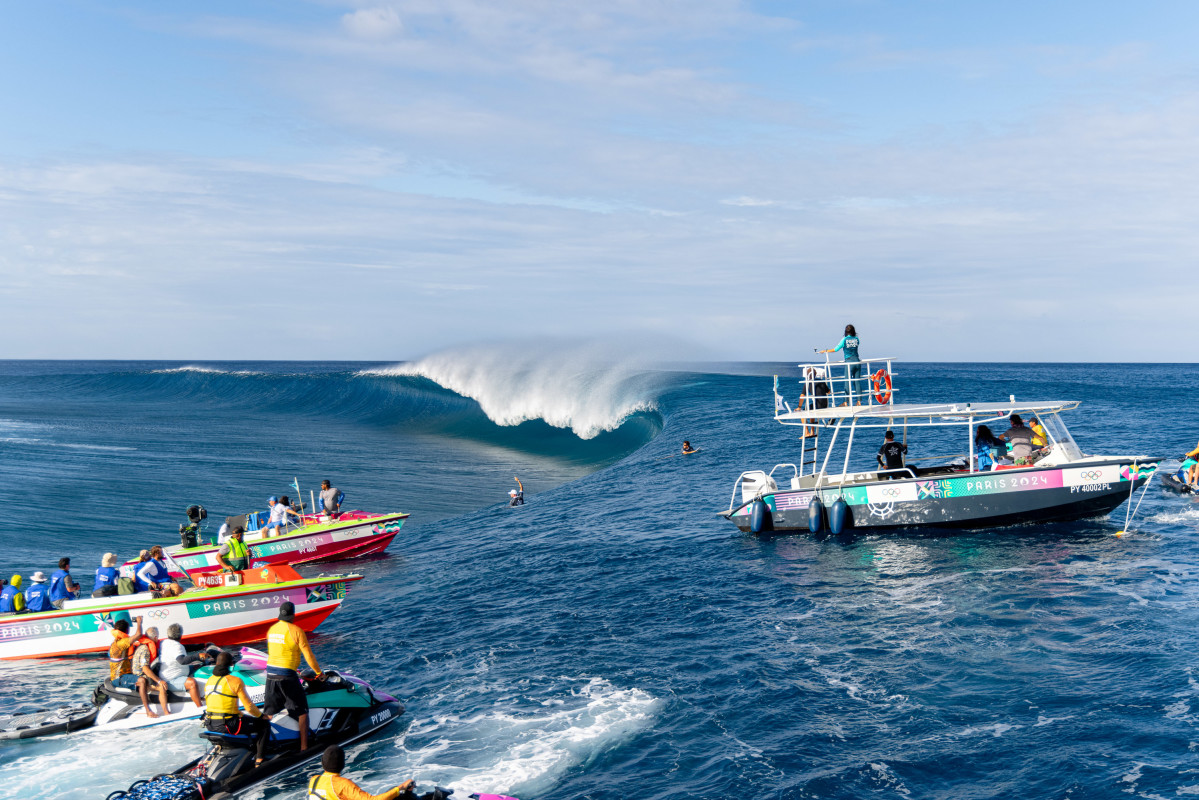
Photo: Ryan "Chachi" Craig
What happened the other day – the big day [Monday, July 29th] – when there was a potentially dangerous situation with one of the boats in the channel?
So, pretty much every boat out there is anchored – with the exception of a few, including the photographer and athlete boats. They’re all in a line, going from closest to the wave and furthest into the channel. For the first couple days of competition, it was fine. The boats were further out from where the wave was breaking. Then, on the third day, the swell was like three times the size. All of a sudden, this anchored boat was, like, directly in front of the breaking wave.
Our photo boat – a two story photo boat – gets into position in the morning. We have to be strategic about where we are when a set comes in, from a safety standpoint. We couldn’t get into position without that anchored boat blocking our shot. So, a few of us were pretty vocal about getting that boat out of the way. We couldn’t see anything.
If there was a wave that came in, maybe two feet bigger than the ones rolling through, potentially that boat would’ve been ripped off its mooring. They have a scuba diver out there, who is attaching and detaching the mooring. It took them, like, two heats to move that boat. There was about an hour of heavy, flawless Teahupo’o that we had an even more limited angle of. They said it was a safety thing, but that was totally unsafe. A boat attached to a mooring when it’s giant like that is not safe at all. This is one of one hundred different formalities that nobody has any idea about why they are in place, but they are.
What’re your thoughts on the viral photo of Gabriel Medina?
I wish it was mine. [Laughs.] I don’t know a single photographer out here who wouldn’t have wanted 190,000 new followers in two days. That may sound silly, because what are followers? But that equals notoriety, and a lot of work is going to come his way. To his credit, I have that photo, and half of the press boat is in it. Half of the other photographers are looking at their cameras, and not shooting the kickout. They’re looking at the barrel shot they just took. I give him credit for being prepared to shoot a sharp photo at the right moment. I can’t hate on it.
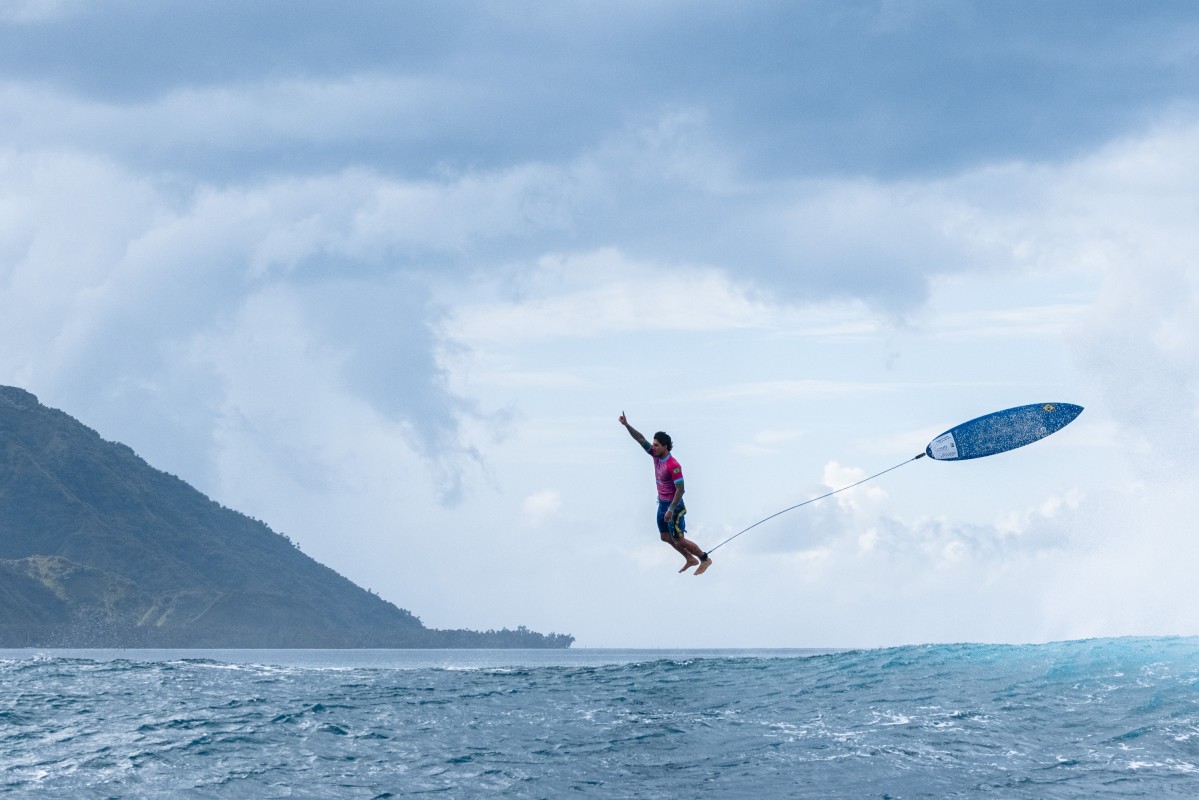
Photo: Ryan "Chachi" Craig
The funny thing is, it’s not even the wave, either.
It’s a super weird situation with that wave, which was one of the better waves ridden in competition history, the moment that was celebrated is the kickout and not the barrel. That’s always a funny thing for surfers. It reminds me of people kicking out of a wave at the Wedge, and the whole crowd erupts. Or like the end section at Pipe – when someone gets blown out of a 10-foot barrel, then when they do the kickout is when the crowd goes crazy. It’s almost fitting that a photo of a kickout claim is the most memorable moment for Olympic surfing history. I would guess that most people watching, and following along online, have no idea what they’re watching. So, it’s oddly fitting that it’s that moment that’s going to be remembered.
Related: Gallery: This Day Will Go Down in Olympic Surfing History
What makes Teahupo’o such a special place to shoot?
It’s just so beautiful. It’s a bit more of an eyesore with everything that’s going on with the tents and the construction. It’s definitely lost a lot of its pristine beauty. And yet, it’s still an absolutely stunning part of the world. We hope it stays that way, even after the Olympics pack up and leave.
It’s such an iconic spot in surf photography – from Laird Hamilton’s “Millennium Wave” to Nathan Fletcher during the Code Red swell, and so many other moments – what is it about the wave that makes it so photogenic?
There’s a lot of things. The light here is similar to the North Shore. For whatever reason, the morning light is pretty much untouchable. Then, the way that the reef is positioned, combined with the winds, on a lot of these memorable days, it tends to be glassy or offshore. It gives you the opportunity to see this wave in all its glory. That, and just any slab, is photogenic by nature.
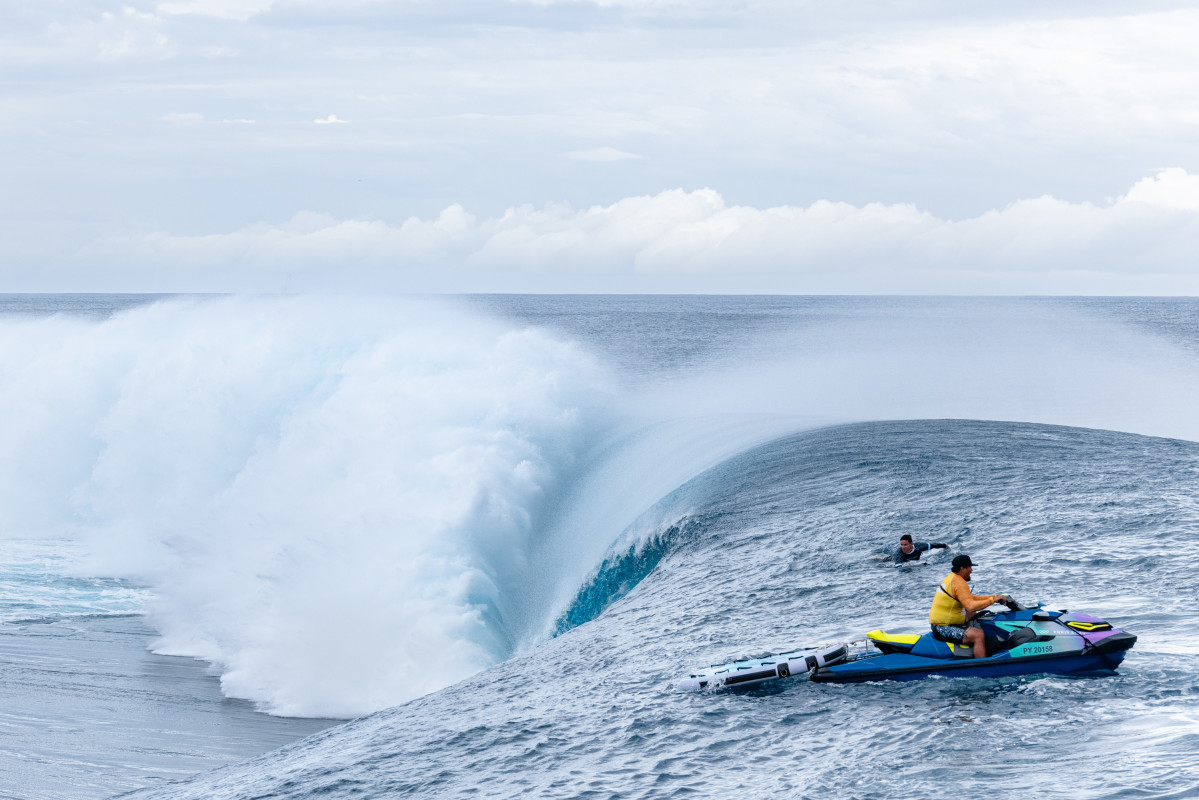
Photo: Ryan "Chachi" Craig
After the Olympic circus is over, what’s next for you?
I’ll be hanging here for probably another week after the Olympics is over. I want to see what the event site looks like after. I’m hoping they clean it all up nicely. I’m also hoping for another big swell. It looks like the day after the Olympics looks like it maybe would’ve been the second-best day in the event window. So, I’m hoping to get a couple tubes myself, hoping to swim and shoot where I want to, and hoping to not listen to all the rules. After that, we’ll see. No plans!

